Horses have become one of the greatest human companions since ancient times. They symbolize strength, resilience, beauty, and elegance. Even in these modern days, horses have been used in commercial branding for luxury cars, top-line clothing, and other big businesses.
Everyone knows that horses are intelligent and self-sufficient animals. They have no trouble living and running free in the wild. But the main question is: what is the proper way to successfully breed and raise horses today?
In this article, we will answer every question that you have about raising your own horses.

Preparing Yourself To Handle Horses
Like most activities, you can’t just dive in without any preparation or some basic knowledge. Owning a horse is not like raising small pets.
Before purchasing your favorite equine, be sure that you know how to properly ride the horse. You can hire a professional trainer to help you with horse riding. Or better yet, if your friends are horse lovers and own these beautiful creatures, don’t hesitate to ask for their help.
Until you can ride a horse well, it is better for you to lease an animal. You can opt for a partial or full lease for a short period of time. When you do a partial lease, the owners will do all the feeding, grooming, and lend their horses to you.
But if you choose to do a full lease, your responsibility is the same as theirs. This could be a good way to explore horse ownership and decide whether you are capable and suited to handle this animal.
When the time comes, and you feel comfortable enough to handle a horse, then you are ready to make a purchase.

Choosing A Horse Breed
Look at purchasing a horse as an investment. Doing your own due diligence is definitely the first step toward becoming a horse owner.
Choosing a specific horse that is trained to your needs should be the main focus. Some horses are born for pleasure and therapeutic riding while others can be used for heavy works on the farms or horse racing.
Different breeds are capable of doing one or more things. It all depends on how you are able to learn their abilities and maximize their potential. The last thing you want is to purchase the wrong breed that you can’t handle and end up quitting halfway.
There are a few things that you should keep an eye on when choosing your desired horse. For instance:
· Horse Size
A horse should be suited to match your ability to mount and ride them, which can depend somewhat on your height. Generally, a person with a height of six feet can ride a horse that stands at least 14.5 hangs high. Your feet should not extend very much past the belly of the horse when you are mounted.
Any experienced rider can handle different horse breeds compared to people who are new to this activity. But if you have children, then purchasing a pony or small to medium-sized horse is definitely the right choice.
· Temperament
Horses are emotional creatures and different breeds possess their own personalities. Certain breeds aren’t beginner-friendly due to their highly energetic and unpredictable manners. For instance, the Arabians, Thoroughbreds, Shires, Australian Brumbies, Mustangs, and many more.
Instead, docile breeds like the Morgans, Clydesdale, American Paints, Missouri Fox Trotters, American Quarters, are definitely able to tolerate new riders. If you are a first-time owner, you should also avoid purchasing stallions due to their hyperactive personality. Instead, gelded horses are much better because they are less moody and easier to handle.
· Horse’s Ability
Not all horses are equipped to do different tasks. Big and sturdy draft horses can definitely pull heavy carriages and drag heavy loads. Small, agile, and athletic breeds are used more for trails and leisure riding.
But some horses are also bred and raised both for work and pleasure activities. Depending on your capital and resources, research their abilities and set your eyes on a breed that satisfies your goals and needs.
· Medical History and Background Check
Once you have decided on a certain breed, propose a medical check-up to the sellers so that you can have a thorough look at how healthy the horse is either with their vet or one of your choosing. A complete evaluation of the horse by a vet is definitely a sound decision and could save you from buying an unhealthy horse.
Finally, a clear background check on the horse should also be done. As a new owner, you have to know every important detail including previous owners, documentation required by local laws, the psychological history of the horse, and how it has been raised.
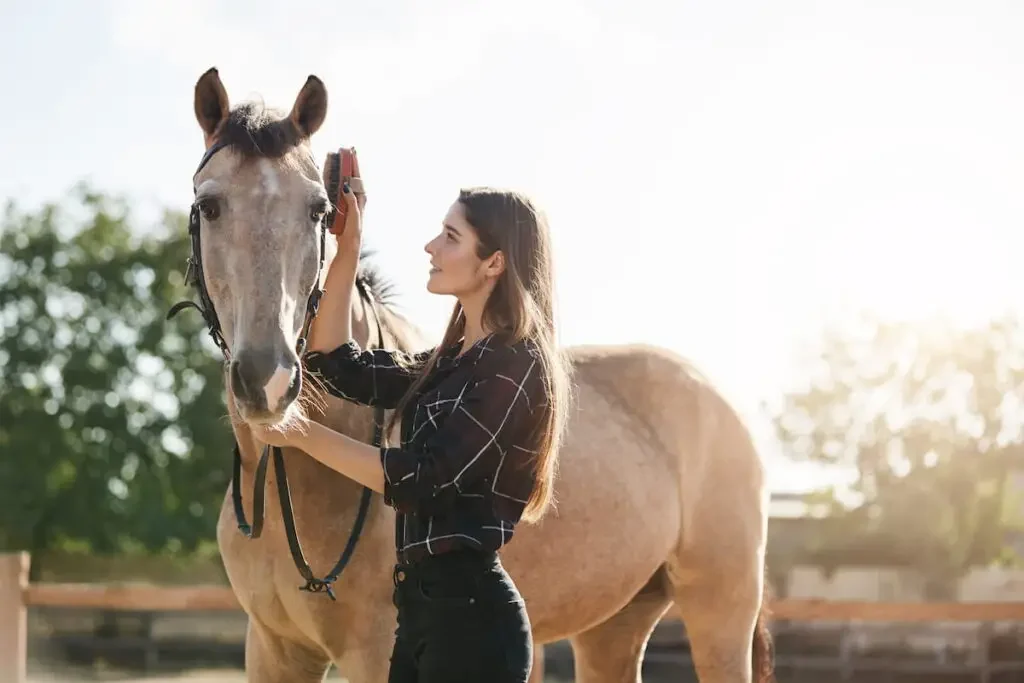
The Cost of Horse Ownership
Once you have done all the research, vet checks, and physical evaluations, then it is time to fork out some cash. Every budding horse owner should know that a horse can become a big commitment, especially financially. The initial capital that you have to allocate is the horse’s price itself.
The value of a horse is based on a few parameters: its physical build, temperament, how well it has been trained, and pedigree. A pedigree can be defined as selective attributes and strong genetic lines that the horse possesses.
This will determine how high their current market value is. Unless you have experienced examining and evaluating how a certain horse is priced, then it is highly advisable that you bring a certified horse trainer or experienced breeder in before making any purchase.
Generally, you can buy a starter horse within your local market for $5000 or less. You can also purchase a horse at auctions or through private contracts.
When you buy from private sellers, you get the chance to do a close inspection of the horse. But when you buy from auctions, there are often different breeds that you can choose, depending on their specific ability and physical traits.
Finally, there are other miscellaneous costs that you should consider including:
· Training lessons
Hiring a professional to help you with your new horse is definitely helpful. Aside from sharpening your skills, your instructor can advise on you anything that you might encounter with your new equine.
· Equipment
Every horse needs complete basic items like saddles, bridles, fly spray, grooming equipment, horse blankets, and many other items. Investing in high-quality gear will ensure they last for a longer period of time without too much wear and tear.
· Farrier
Regular farrier care can keep your horse’s feet and hooves healthy. Generally, this should be done every six to eight weeks, depending on the type of shoe and trimming that it needs.
· Veterinarian
Your vet’s job doesn’t end after you have purchased the horse. You might need to seek his or her consultation from time to time, in case your horse falls sick or suffers from any diseases.
Apart from vaccination and worming fees, you can also purchase medical insurance for your horse to cover any upfront cost of treatments that you have to pay.
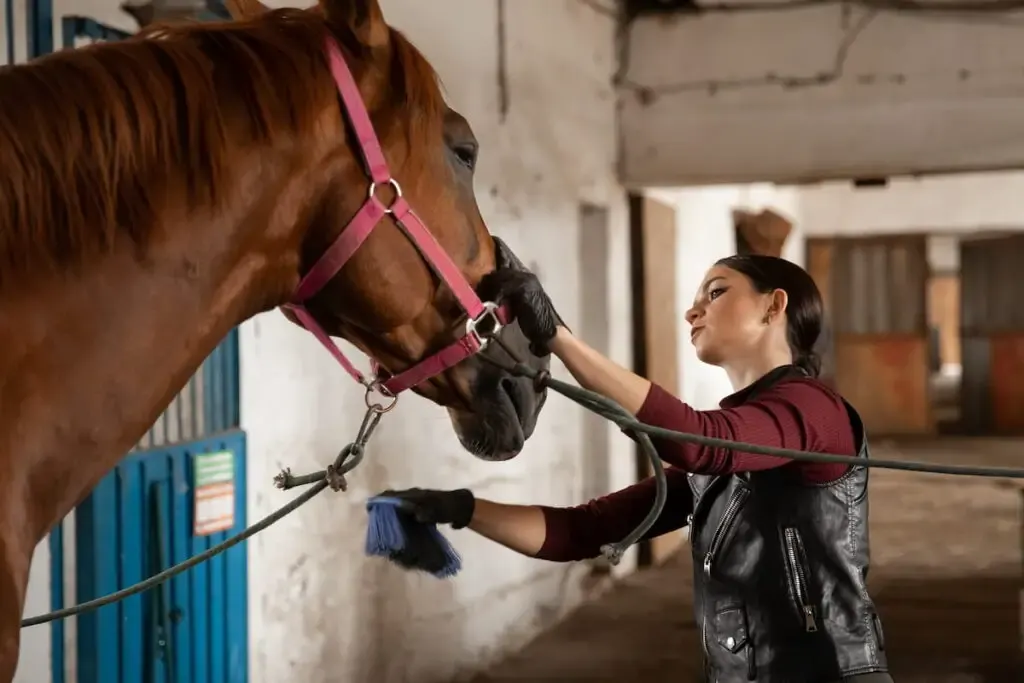
Essential Horse Care
Every horse owner bears the responsibility of keeping his or her horse healthy, both physically and psychologically. The only way to optimize your horse care is by creating a daily and weekly schedule. Some of the basic care routines that every horse needs would be:
1. Regular monitoring
Out in the wild, horses are able to maintain themselves according to the habitat they grow up and live in. But once you bring the newly purchased horse to your home, it can take quite some time to adapt to its new environment.
Be sure to check on it at least once a day and look for any scars, scrapes, cuts, bruises, or signs of injury that they might get when you are not around. Then, provide clean, fresh water and add hay or fodder so they will have enough food for the whole day.
Once a week, you can clear the stable to keep it free from any dirt, parasites, or pests. If there are broken fences or railings, repair and replace them to keep the stable safe and free from any objects that could harm your horse.
Finally, scrub the water trough and feeder to remove alga, dirt, or built-up concentrates that could make spoil your horse’s water and food.
2. Shelter and housing
Your horse needs a proper shelter that can protect it from harsh weather and changing climates. Like any other property, you should always consult the local authorities and get a license or approval before building the shelter. This is due to the strict fire code law that you must adhere to when building a barn or horse stables.
Then, you choose between a run-in or a barn for shelter.
The most simple and practical outdoor shelter would be a three-sided run-in shelter that measures at least 170 square feet per horse.
This shelter serves to protect the horse from the rain and gives them some shade during sunny days. Feeding buckets and small water troughs should also be placed near or inside this shelter.
For an indoor shelter, you can build a box-like stall that is safe and suitable for your horse. The stall should measure around 170 square feet, which is comfortably suited for one horse. The bedding can be made using sawdust and straw.
Like an outdoor shelter, you must also provide the horse with enough supply of hay and water. Regular cleaning can be scheduled at least twice a week to remove any dirt and waste. An indoor shelter should also have a proper ventilation system to regulate a sudden increase or drop in the surrounding temperature.
3. Diet and feeding habits
Feeding your horse with the right food will ensure that its growth won’t be stunted by malnutrition and vitamin deficiency. The basic rule given by the British Horse Society is that every horse needs to eat food that weighs at least 2.5% of its body weight. This could also vary depending on their body size, weight, and rate of metabolism.
Another important thing to note is that horses can’t eat just about anything. Due to their sensitive gut and digestive system, they need a consistent diet without drastic changes that could make their stomach sick.
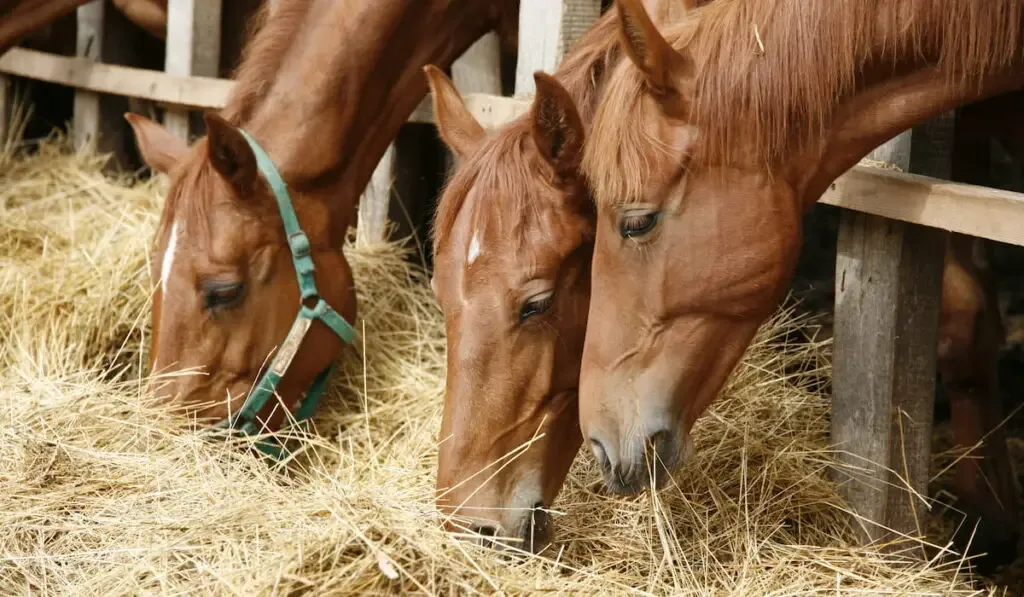
Some of the things that they can consume are:
· Fiber and roughage
Hay, grass, and haylage are roughages that should be incorporated into a horse’s diet. If possible, avoid feeding your horse with cheap hay that is dirty, dusty, and could contain poisonous plants. Invest in high-quality hay that could supply your horse with all the fiber that it needs.
· Cereals and grains
Aside from roughages, you can include cereals and grains into your horse’s diet. Some grains have been processed and are sold as hard feeds for horses. Depending on how healthy and active it is, your horse doesn’t have to feed on this type of food regularly.
· Fruits and vegetables
Fruits and vegetables are good sources of protein. You can feed them to your horse regularly or use them as treats. Bananas, apples, watermelons, peaches are some of the healthy foods that your equine companion will love.
Be sure to cut these fruits into thin slices or small chunks to ease the swallowing process. Also, avoid hard fruits that can become choking hazards to your horse.
· Supplements
Essential vitamins and minerals are needed by horses to stay healthy. Some of the supplements that you can give to your horse are apple cider vinegar, garlic, and a mineral lick.
Before feeding your horse with any of these things, be sure to consult the vet firsthand. This could avoid issues that may come when you feed your equine with supplement quantities that could harm your horse’s health.
· Treats
Every once in a while, you can feed your horse with treats to keep it happy. However, some treats contain a high level of sugar and additives. So, be sure to find organic or low sugar treats to maintain the sugar level in their system at an optimum level.
4. Grooming your horse
Horse care isn’t complete without a grooming routine. Grooming your horse is fairly important to keep the body and hair free from dirt and foreign particles. You can purchase horse grooming equipment at any shop that specializes in horse care.
Some of the basic grooming steps are removing stones and dirt from the hooves, brushing the face and body, combing the horse’s mane and tail to keep them healthy, and carefully wiping the ears and nose.
This routine can be done daily or weekly, depending on your availability or how active your horse is. If you let your horse out to run and roam free daily, then daily grooming would be a good choice.
Once in a while, you can wash and shampoo your horse to keep the skin healthy. Trimming the hooves and changing the horseshoes are necessary when you notice the hooves are getting longer.
5. Waste management
A dirty stable and horse shelter is not a good place for horses to live healthily. Worst case scenario, it could suffer from diseases from the presence of pests, flies, and parasites that thrive in the waste they produce. Daily removal of your horse’s waste will ensure that the stable is clean and free from any threats that could affect its health.
Ideally, you don’t necessarily and have to throw horse waste away. It can be turned into compost and manure for plants that need organic nutrients in their soil. Well-rotted manures contain a high level of organic matter that is beneficial to crops.
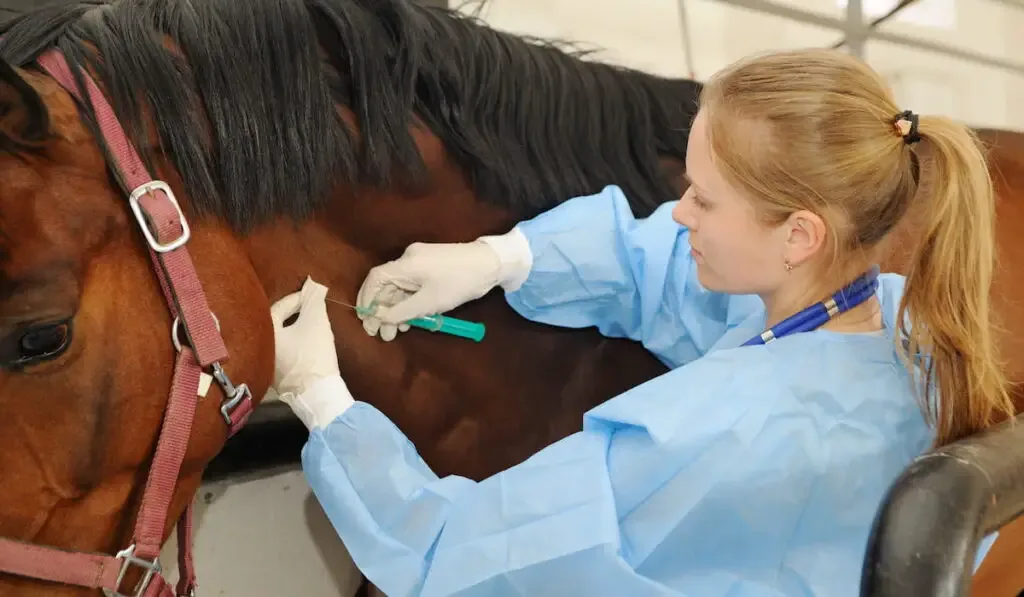
Horse’s Health Care and Maintenance
When it comes to a horse’s health, you should always consult the vet whenever something serious happens. However, you can prevent any major health issues by regularly monitoring your horse’s well-being. Some of the general health care procedures that you can do are:
· Regular deworming
Deworming can be done by administering deworming paste to prevent the growth of worms in your horse’s stomach and intestines. Generally, this medication will be used every six to eight weeks, depending on the doses and strength of the paste.
· Teeth care
Hiring an equine dentist to check on your horse’s teeth can prevent health problems caused by poor dental conditions. A dental check should be done at least once a year. Also, an older horse needs extra dental care because its teeth may grow unevenly.
· Vaccinations
Consulting the vet for the vaccination process is very important. Keeping your horse’s immune system strong to fight any infections or diseases will ensure that it can live longer and healthier. Illnesses like viral respiratory diseases, strangles, and tetanus can be prevented by administering vaccines.
· Monitoring for signs of serious illnesses
Horses can develop serious illnesses that could lead to fatality if left untreated such as laminitis and colic. Laminitis affects the hooves and makes them inflamed and sore. Colic is the most common and dangerous disease that affects a horse’s digestive tract, leading to heavy abdominal pain and death.
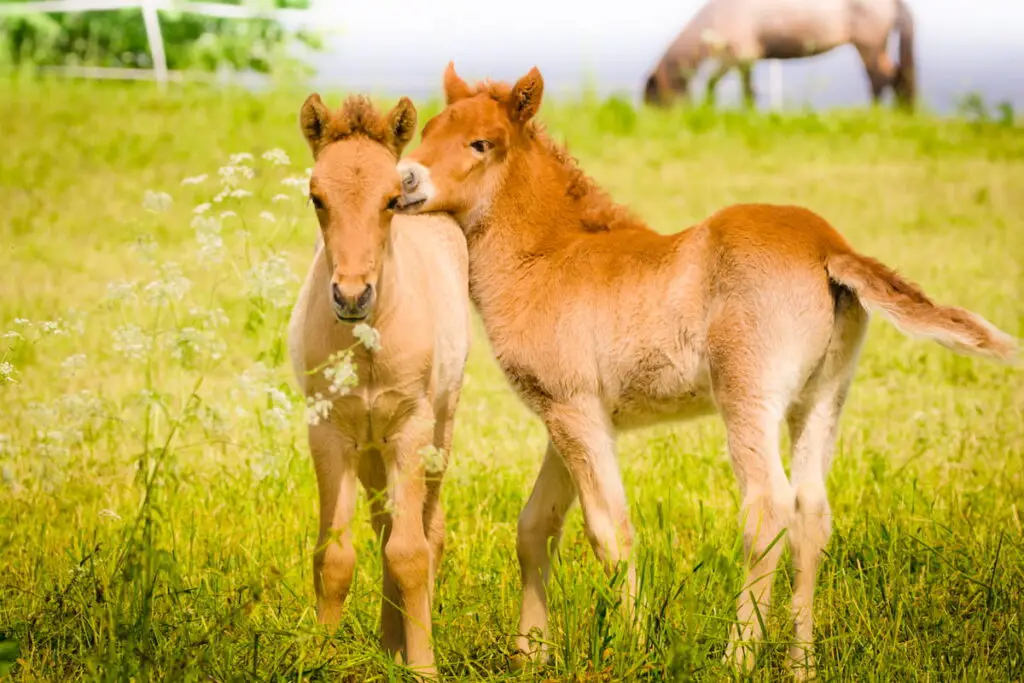
Raising a Foal
Unlike mature horses, a baby horse needs special care and attention. If your mare gives birth to a foal, your responsibility to raise it starts immediately. During this early stage, you can spare some time to bond with the baby horse at least three times a week.
This is a great time to introduce the foal to regular brushing and light grooming. You can also purchase a foal-size halter to begin halter training.
Then, teach the foal to lead and tie. To do this, you lead the mare around and the baby horse will naturally follow its mother. Take it easy and don’t rush the baby horse to follow your pace. When the time comes, leading will become second nature.
Then, teach the foal to tie by tying it on a stall or a small pole. Be sure to have its mother close or next to the baby horse to make it feel safe and calm. Leave a wiggle room so it can move around but not too far away from where you want it to be.
When the baby horse reaches four or six months old, it is time to wean it by separating it from the mother. At first, the foal will be uncomfortable being away from its mother. But this stage is necessary to train the baby horse to be independent.
After a few weeks, take it for a walk in different environments. When the foal reaches eight to twelve months, you can trim and shoe its hooves.
Like humans, a baby horse needs a proper bonding with its owner. There is nothing better than having an easy-to-handle mature horse that you have successfully trained at a very young age.
Final Thoughts
Regardless of which breed you choose to purchase and raise, there is no doubt that raising a horse can be a full-time commitment. But that doesn’t mean that you can’t have a lot of fun and enjoy the process.
What matters the most is the bond you build with your horse. The better you take care of and raise it, the more eager it will be to be your companion.
Citations
- https://thehorse.com/135881/read-this-before-you-buy-your-first-horse/
- https://wikifarmer.com/housing-horses/
- https://extension.umaine.edu/publications/1004e/
- https://agriculture.vic.gov.au/livestock-and-animals/horses/basic-horse-care
- https://www.thesprucepets.com/horse-care-101-1886033
- https://wikifarmer.com/horse-waste-and-manure-management/
- https://www.thesprucepets.com/horse-and-pony-care-by-the-day-1886011
- https://equestrianspace.com/horse-management/
- https://wikifarmer.com/health-safety-and-care-of-horses/
- https://theultimateequestrian.com/basic-horse-care-for-beginners/
